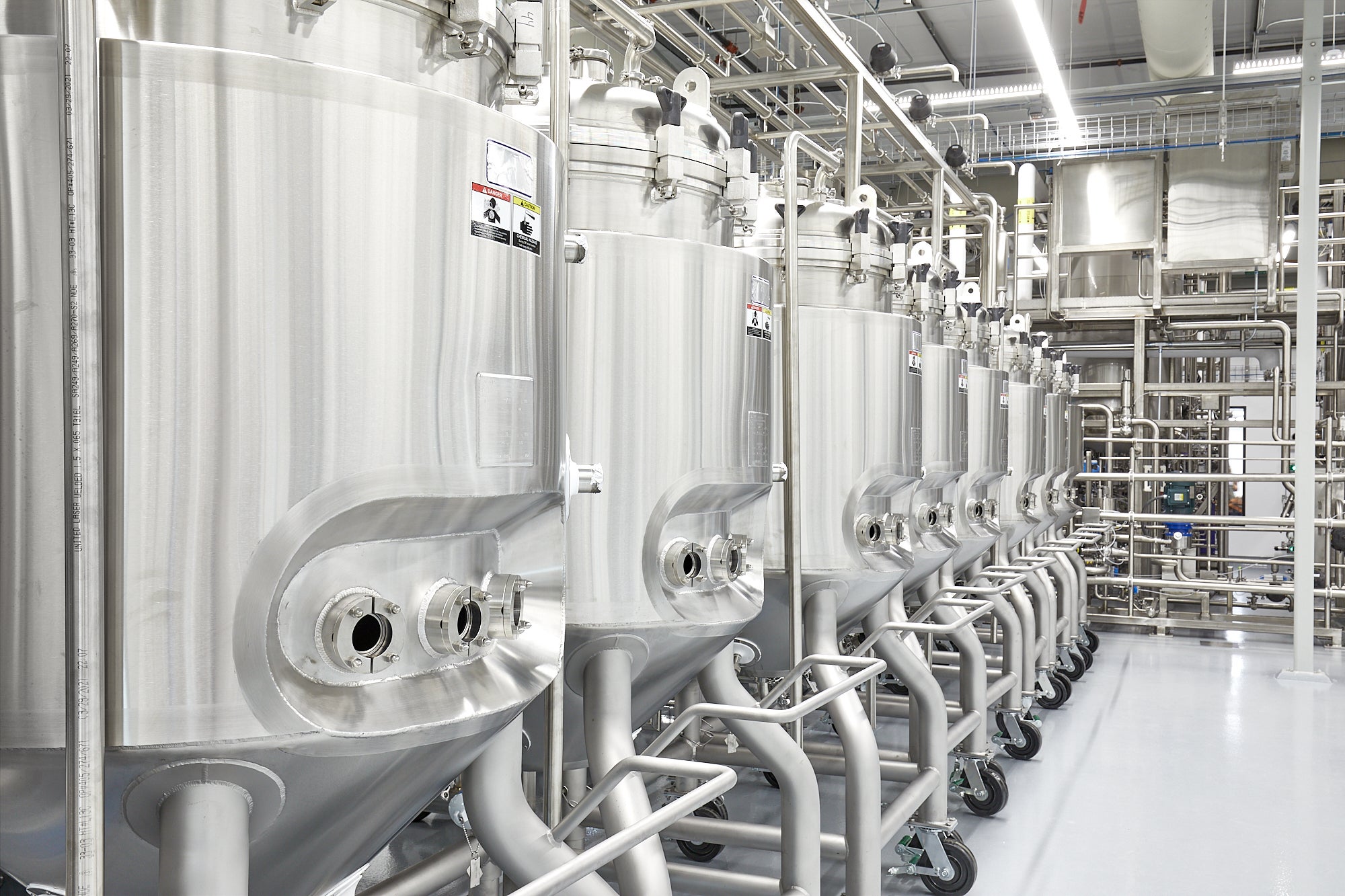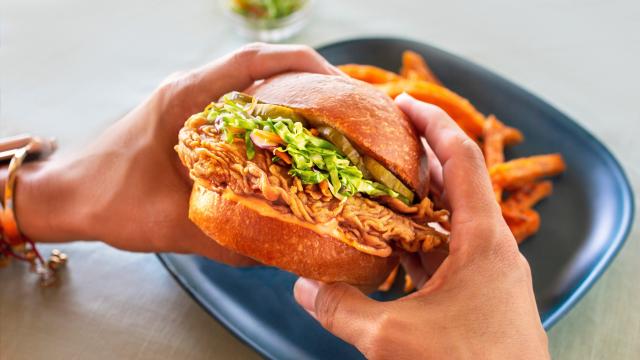Lab-grown meat is one big step closer to grocery store aisles and your dinner plate. The Food and Drug Administration announced its first-ever rubber stamp for a cultured meat company on Wednesday. UPSIDE Foods completed the FDA’s pre-market consultation process, and the agency found no reason to doubt the company’s safety claims.
Though technically not an “approval process” the FDA’s assessment of UPSIDE amounts to a green light for the company’s technology and production method, which uses small amounts of chicken cells + a growth medium to culture larger quantities of meat, minus the slaughter.
“We have no questions at this time regarding UPSIDE’s conclusion that foods comprised of or containing [its] cultured chicken cell material…are as safe as comparable foods produced by other methods,” the FDA wrote in its letter to the company — which is a clunky way to say: ‘sure, looks good.’
Cultured meat has been hyped up for years as a potential solution for the multitude of environmental downsides of standard, animal-made meat. Though some studies have called into question the actual environmental benefits of lab-grown steaks, filets, and drumsticks, the reality is it’s hard to measure the relative climate and pollution costs while “meat minus animals” has stayed mostly theoretical.

Companies have been vying for regulator approval of cultured meat in the U.S. for a long time, to no avail. Without the FDA’s blessing, no manufacturer has actually started producing their product at marketable scale. There are lots of different environmental considerations involved in accurately determining a food’s impact.
In the case of cultured meat, important factors like the land used to grow the grains included in cell growth medium and the energy needed to run these facilities are big question marks. Lots of varying estimates are out there, but until a company actually navigates those decisions and manages to make money — it’s hard to say how cultured meat’s environmental footprint compares to that of factory-farmed livestock.
In 2020, Singapore was the world’s first country to approve the sale of cultured meat. In that case, the product was Eat Just’s chicken. Wednesday’s FDA announcement isn’t quite the same thing — one specific product hasn’t gotten the go-ahead for grocery aisles quite yet. And if UPSIDE wants to sell their stuff in stores, they’ll have to navigate further oversight from the USDA and the Food Safety and Inspection Service.
Nonetheless, it’s one of the biggest steps in recent years towards expanding cultured meat from the conference-circuit sample tray to actual consumers. Well over a hundred companies and start-ups have invested in the idea that lab-grown meat could be food’s future, and now we might actually get to find out.
